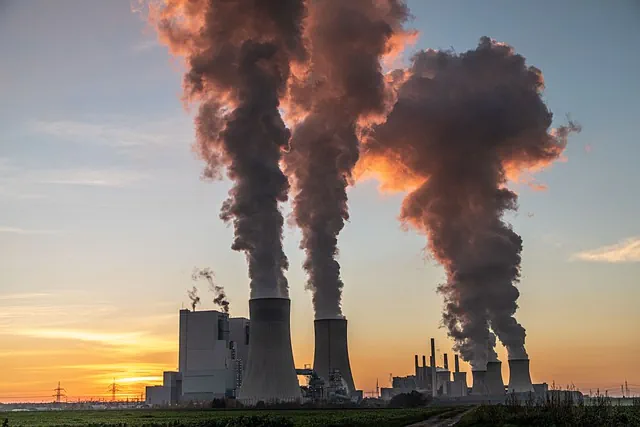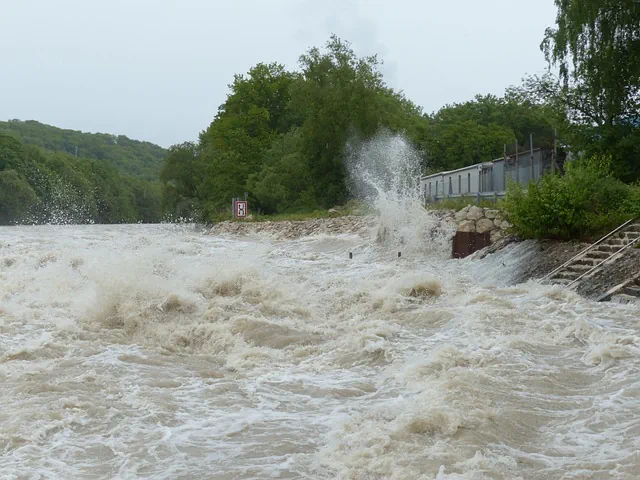
How Does Logging Affect the Environment?

Table of Contents
The conflict between environment protectors and forest exploiters has intensified in 2022. This is because of increased human activity in forested areas. Deforestation, which is the complete removal of forests and other forest resources, has threatened human existence for years now. However, the commercial felling of trees to make products has also intensified today. If you look at the effects of deforestation, you’ll see that illegal logging has almost the same impact on the environment. Read on if you want to discover the significant effects of logging on the environment.
Increases Greenhouse Gases Emission
Greenhouse gases like carbon dioxide and water vapor trap heat in the atmosphere. Green trees absorb carbon dioxide from the atmosphere during photosynthesis. They convert the greenhouse gas into glucose. Plants also release oxygen, which animals need for food combustion. So, trees act as carbon sinks.
The increase in logging operations causes trees to release more carbon dioxide into the atmosphere. Animals also release carbon dioxide when they breathe out. In the end, we remain with too much carbon dioxide in the atmosphere because of the shortage of trees.
The 2021 Glasgow Climate Change Conference held that logging is partially responsible for the rising global temperature to over 1.5 degrees, and it is directly responsible for unprecedented climate changes.

Power plant. Pixabay
Encourages Frequent Soil Erosion
Trees have various types of roots that complement each other to anchor forest soil to the ground. When widespread logging occurs in a forested area, the topsoil becomes loose and highly vulnerable to agents of soil erosion like water, wind, and animals. The Guardian says that the Earth has lost approximately half of its reproductive soil due to soil erosion in the last 150 years. We need the lost soil to grow 95% of our food. So, logging hinders many plants from growing as it washes away the fertile soil and deposits it into water sources like rivers, lakes, and more. Besides, the fertile soil pollutes the water sources. So, sedimentary runoff from forested areas affects everyone who consumes the water.
Since the environment depends on the availability of various plant and animal species to stay healthy, logging operations can hinder its sustainability. So, unless we increase timber production, illegal logging operations will continue. This might soon lead to the destruction of all plant and animal life in wide areas over a short period.
Increases Habitat Destruction
Animals depend on trees for food, nesting sites, and shelter. Carnivorous animals feed on herbivorous and omnivorous.
Any disruption in the food chain can severely imbalance the forest ecosystem. Without enough trees, animals become endangered. They have to look for alternative habitats fast enough before their predators catch up with them.
Because of deforestation and logging, most animals cannot secure alternative locations. So, they eventually perish. The shortage explains why animal populations typically suffer unprecedented losses whenever forest exploiters destroy their original habitats.

Wild boar without a habitat. source
In tropical forests, habitat loss or fragmentation significantly affects animal populations.
Species diversification is highest in these places, and is responsible for this trend. This concept also explains why illegal logging operations threaten species like the howler monkey and the northern spotted owl.
Leads to Loss of Biological Diversity
Some forests provide safe living homes for hundreds of plant and animal species. According to a post on Live Science, the Amazon rainforest, which covers 634 million hectares (less than 2% of the Earth’s surface), is home to approximately 10% of the world’s known species. From this figure, it’s clear that almost every plant and animal species calls the forest home.
Some world forests are inhabited by a few species. When forest destructors cut down trees, we start by losing the most threatened species.
Biodiversity in the forests helps to make the ecosystems self-reliant. So, once we’ve lost it, the environment can get exposed to unpredictable dangers.
Sometimes a minor loss of biodiversity can lead to what most conservationists regard as the worst consequence of logging. If small frogs go extinct in a forested area, that can affect birds and other animals that rely on them for food.
The reduction in the number of birds can also affect their predators. This trend can continue and eventually affect the entire forest ecosystem.
Interferes with the Natural Water Cycle
The water on the Earth’s surface is distributed through a process that heavily relies on giant trees. The process partly relies on evaporation. The water in the ocean, river and other sources evaporate and condense in the atmosphere to form clouds that eventually return to the Earth as rain.
However, evaporation alone can’t supply the water needs of all plants and animals. In dry areas and deserts, evaporation often plays a minimal role in creating rain. The Earth largely relies on evapotranspiration for the water cycle to continue. This process refers to the sum of transpiration from plants and evaporation from the land. Some huge trees extract underground water and release it through the stomata, the small openings in the stems and leaves of trees and plants.

During photosynthesis, these pores open wide to allow for gaseous exchange. The trees release water vapor into the environment. This way, the amount of water that condenses into clouds and eventually falls as rain to replenish the Earth increases. Logging reduces the number of trees that can extract the underground water.
So, it makes forests that were once fertile and well-watered to be barren. This process is referred to as desertification. It increases forest fires and loss of plant and animal life.
Promotes Irresponsible Farming
Since logging creates enormous trucks of unusable land, it leaves farmers confused as they try to reap the most out of their spaces. We’ve said that soil erosion can reduce soil fertility to zero. In the past, this could automatically mean the onset of desertification. However, modern farmers and ranchers can resort to chemicals, fertilizers, and artificial stimulants. Through this technique, they make eroded land usable again. However, these artificial solutions come with lots of drawbacks. Most farmers register low productivity because of increased acidity. They use other chemicals to change the pH level. All these fertilizers pollute water sources and expose more animals to health hazards. The added cost of fertilizers and additives also eats into the profits you can use to mitigate some effects of logging on the environment.
Increases Flooding Risks
When the topsoil remains bare, humans, plants, and animals experience increased exposure to flooding. Coupled with the fact that the remaining trees may be too few to take up the extra moisture, downstream communities might face the danger of instant extinction. The lack of adequate trees also means no resistance to moving water. That’s why the velocity and speed of the floods threaten the safety of properties, crops, gardens, lives, and more.

Raging floods near a forested area. source
If the trend continues for a while, the world can experience untold climate effects that may wipe away the entire human, plant, and animal population from the face of the Earth.
Escalate Negative Change of Culture
Human beings rely on their tribal instincts more than they realize. You may associate this trait with indigenous people. You decide based on your sense of comfort. When you choose to cut down trees at the expense of the Earth’s future, you must first change your worldview. Most people who live downstream die a few days after relocating to safer grounds. This happens because of disease exposure and the inability to adopt new thinking patterns. The loss of manpower affects organizations that are interested in restoring the lost glory of forested areas.
How to Prevent the Negative Effects of Logging
Some plants and animals can’t survive in regenerating forests. So, the best way to prevent further environmental problems is to stop illegal logging. This should be done soon to give the forest time to rejuvenate.
The 2021 United Nations Conference on Climate Change provides resolutions that show that many nations have recognized this. According to the UN Secretary-General, the 2021 outcome document that approximately 200 countries adopted reflects the world’s current interests and state of political will. Over 100 countries are committed to ending logging and deforestation by 2030. We expect the resolution to help reduce the effects of these practices before the stipulated deadline. However, as the UN chief said, the commitment is not enough. So, given the potential impact of logging on the environment, we should pay more attention to restoring the already damaged forests. To do that, every individual, organization, nation, and forest management should develop short- and long-term forest-cover restoration goals. Old-growth forests can take up to 100 years to recover fully.
High demand for consumer products is one of the key drivers of logging. If consumers change their habits and start demanding products harvested using sustainable methods, manufacturers and business people will adopt environment-friendly practices to remain competitive, and that’s another important thing that we should do.
Bottom Line
We have the ability to reduce the conflict between environment protectors and forest exploiters that has intensified in the 21st century to minimize the effects of deforestation and logging.
To achieve this goal, we should stop illegal logging and increase timber production. We should also restore the already damaged forests and adopt sustainable manufacturing methods. Also, we should use advanced forest management techniques to mitigate forest fires, floods, and illegal human activity in forested areas.